Highlights
- Despite increasing research in sport-related concussion in general, a gap exists in knowledge about concussion in Para athletes.
- The Concussion in Para Sport (CIPS) Group developed a position statement addressing necessary modifications for concussion assessment, management and return to sport.
- As with all concussions, education and prevention are key. And when a concussion does occur, the critical first 2 steps are recognition and removal.
- Existing concussion assessment tools, like the SCAT5, can be used for Para athletes, but modification may be needed.
- Appropriate assessment and management depend on a thorough baseline assessment of the athlete.
In 2020, an international group of clinicians, researchers and athletes met virtually to explore how to best assess and manage concussion in an athlete with a disability. This group’s individuals had experience and expertise in the care of Para athletes, and in the assessment, management and prevention of concussion. They named themselves the Concussion in Para Sport (CIPS) Group.
Their fruitful output included producing the “1st position statement of the Concussion in Para Sport Group,” published in April 2021. Recommendations and guidance were based on the group’s experience and on available evidence. Through this position paper and CIPS’s plan to promote research and knowledge translation, the group hopes to close the gap in Para concussion knowledge, and optimize concussion care and prevention strategies for Para athletes.
Based on the CIPS position statement, this article summarizes what we know (and don’t know) about concussion in Para sport. It also provides evidence-informed recommendations for assessing, managing and preventing concussions among Para athletes.
Does one size fit all?
As recently as 25 years ago, physicians used various concussion management guidelines based on guideline developers’ experience, supported by little-to-no scientific evidence. In 2000, the Canadian Academy of Sport and Exercise Medicine published the first “modern” management guidelines. Those guidelines called for initial rest following a concussion, then a graduated return-to-sport approach once the athlete no longer had symptoms. Next, in 2001, the First International Conference on Concussion in Sport brought together clinicians and sport scientists with expertise in concussion. The first international consensus paper was published that same year.
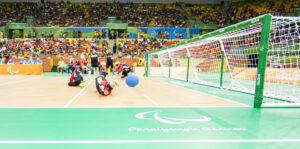
Since then, the Concussion in Sport Group has met 4 more times, most recently in Berlin in 2016. During this time, updated consensus statements were published along with assessment tools such as the most recent versions of the Sport Concussion Assessment Tool (SCAT5) and the Concussion Recognition Tool (CRT5). These statements and tools have provided guidance on the recognition, assessment, management and prevention of sport-related concussion (SRC). But while these guidelines and tools have been developed for anyone participating in sport, does a one-size-fits-all approach work for concussion?
Consider if someone suspects a goalball player has sustained a concussion. When assessing the potential severity of that athlete’s head injury, the concussion guidelines and assessment tools advise healthcare providers to look for a blank or vacant stare. This may be hard to determine for a goalball athlete with visual impairments. That athlete also couldn’t report double vision as a symptom that’s listed on the SCAT5 checklist. Likewise, depending on the level of visual impairment, the athlete may be unable to complete a written symptom checklist.
Now consider a wheelchair basketball player who’s being assessed for concussion. One of the physical tests in the SCAT5 is to assess balance using 3 different conditions, all involving standing. How do you appropriately assess balance when an athlete is using a wheelchair? Would the SCAT5 balance assessment be valid if an athlete is using lower extremity prosthetics? Various other examples could be made, but it’s clear that a one-size-fits-all approach for concussion management and assessment simply doesn’t apply to many athletes with a disability.
To quickly explain preferred terms, a Para athlete is what the International Paralympic Committee (IPC) calls an athlete with a disability. We’ll reference Para athlete for the rest of this article. Para sports are sports played by Para athletes. It’s important to remember that Para athletes are a heterogeneous group, with athletes having a number of different impairments and disabilities allowing them to compete in various sports.
Para athletes are frequently exposed to concussion risk, particularly in high-speed and impact type sports such as Para alpine skiing, Para ice hockey and wheelchair basketball. They’re also exposed to concussion risk in sports where the risk to the non-Para athlete would be considered low, for example, in track-wheelchair racing, where crashes aren’t uncommon. Unique Para sports such as goalball or football 5-a-side (commonly known as Blind Football) also present an increased risk of collision and therefore concussion, given that athletes can’t see other players, the ball or the goalposts.
In fact, a recent study of elite Swedish Para athletes showed that concussions happened at about the same rate among athletes with and without disabilities, and that athletes with visual impairments had both a significantly higher proportion of reported concussions and a higher incidence rate than athletes in other impairment groups (Lexell et al., 2021). Given the outlined discrepancies between concussions manifestation, assessment and management in Para athletes compared to their unimpaired counterparts, clearly one size doesn’t fit all.
Minding the gap
In London, England, passengers riding the Underground are reminded to “mind the gap” when stepping on and off trains. That warning would also apply to the gap in our knowledge about anything relating to concussion in Para athletes. Despite an increase in concussion research in general, unfortunately there hasn’t been similar growth in research for concussion in Para sport.
A 2018 literature search identified over 6000 articles using “athlete plus concussion” (and related words) as the search terms, but only 60 articles when search terms reflected an athlete with a disability and concussion (Kissick & Webborn, 2018). The previously mentioned International Conferences on Concussion in Sport didn’t address concussion in Para athletes at all. And at the most recent conference, of 202 oral and written abstracts presented, only 2 abstracts were specific to athletes with a disability.
The IPC has conducted injury surveillance studies at every Paralympic Games since 2010, but specific questions about concussion weren’t added until Rio 2016. A review of that data found 10 reported injuries to Para athletes’ head, neck and face, but none were identified as a concussion (Derman et al., 2018). That said, IPC Medical Committee members witnessed 2 incidents during a Blind Football match (live and on subsequent video review), where there was an obvious blow to the head, followed by apparent balance issues. Both incidents weren’t reported as a concussion and the players weren’t removed from play. While it’s impossible to diagnose a concussion from the stands, reliable guidelines exist to assess concussion using video analysis playback (Gardner, 2021), which suggest these players should have been removed from the game and further assessed.
Unfortunately, this isn’t unusual in Para sport where scarce resources may limit access to medical care and the luxury of live video playback. A now retired Canadian Para alpine skier reported she had falls that she suspected she might have caused concussions, but coaches told her, “You hit your face, not your head, so it can’t be a concussion” (Wisniewska & Kissick, 2020).
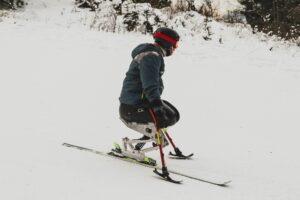 While 4 concussions were reported at the 2018 PyeongChang Winter Paralympic Games, including 2 in Para alpine skiing and 2 in Para ice hockey (Derman et al., 2020), the question remains, were all concussions truly recognized and reported? Given studies on under-reporting of concussion in mainstream sport, it’s likely that IPC surveillance data isn’t reflecting the true number of concussions at these Paralympic Games (Pennock et al., 2020).
While 4 concussions were reported at the 2018 PyeongChang Winter Paralympic Games, including 2 in Para alpine skiing and 2 in Para ice hockey (Derman et al., 2020), the question remains, were all concussions truly recognized and reported? Given studies on under-reporting of concussion in mainstream sport, it’s likely that IPC surveillance data isn’t reflecting the true number of concussions at these Paralympic Games (Pennock et al., 2020).
Data from the 2016 Paralympic Games did suggest a higher risk of injuries to the head and face in Blind Football, a finding supported by other Blind Football research (Magno e Silva et al., 2013; Webborn et al., 2016). Additionally, a study looking at American wheelchair basketball players, aged 18 to 60 playing in tournaments during the 2009 to 2010 season, found that 6.1% of players reported a concussion (Wessels et al., 2012). Of concern, however, is that 44% didn’t report their symptoms to staff, two-thirds of those players didn’t want to be removed from play, and half didn’t know they had a concussion at the time (Wessels et al., 2012).
In addition to the increased concussion incidence in visually impaired athletes, the previously mentioned study of Swedish Para athletes found that female Para athletes reported a significantly higher incidence of SRC than their male counterparts (Lexell et al., 2021). And collisions with either an object or another person were most common ways injuries happened. Further studies to determine how often concussions occur in Para sports, including how and when they occur, will be critical to help direct efforts toward concussion prevention and risk reduction.
To close the gap in knowledge related to concussion in Para sport, the Concussion in Para Sport (CIPS) group published its 1st Position Statement of the Concussion in Para Sport Group in April 2021 (Weiler et al, 2021). Current evidence and the experience of the expert group formed the foundation for the recommendations and guidance included in the position statement. Now we’ll take a closer look at the recommendations from the CIPS Group regarding concussion assessment, management and return to play, and prevention strategies for Para athletes.
Assessing concussion in Para athletes
The Sport Concussion Assessment Tool 5 (SCAT5) is the most well-established and widely used tool in the sideline assessment of sport-related concussion (Echemendia et al., 2017). Much of the SCAT5 (and the general guidance of the Consensus Statement of the Fifth International Conference on Concussion in Sport, “The Berlin Consensus”) still applies when assessing concussion in Para athletes. However, as noted earlier, several aspects of SCAT5 simply may not apply or would require altered assessments.
The Berlin Consensus outlines the “11 R’s” of concussion assessment and management. The first 2 R’s (Recognition and Removal) remain critical in all cases, Para athlete or able-bodied. The most important step in concussion assessment and management is to recognize a concussion may have occurred and to remove that athlete from play or practice. Our previous examples from Blind Football, Para alpine skiing, and wheelchair basketball show that these crucial first couple steps are often missed. Without proper recognition and prompt removal, the athlete won’t be appropriately assessed and treated. This speaks to the importance of education about concussion recognition.
Potential issues with using existing concussion assessment tools like the SCAT5 extend to other factors, such as performing cognitive screening in athletes with cognitive impairment or learning disability, assessment of neck pain and movement in athletes with cervical spine dysfunction, neurological tests like “finger to nose” in athletes with a coordination impairment, and memory and concentration tests in athletes with cognitive or hearing impairments. The CIPS position statement uses a “traffic light” analogy to dig deeper into using the SCAT5:
- Green, if no modification of the SCAT5 is needed (for example, neck assessment in an athlete with a lower limb deficiency)
- Yellow, if modification may be needed (for example, memory testing in an athlete with cognitive impairment)
- Red, where a test doesn’t apply to that impairment type (for example, assessment of “double vision” in an athlete with full visual impairments)
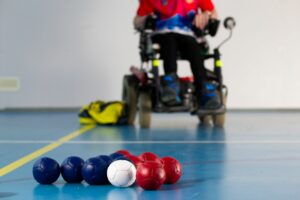 Potential modifications are discussed in the CIPS position statement, such as the Wheelchair Error Scoring System (WESS) for assessing balance for wheelchair athletes (Wessels, 2013).
Potential modifications are discussed in the CIPS position statement, such as the Wheelchair Error Scoring System (WESS) for assessing balance for wheelchair athletes (Wessels, 2013).
A crucial fact to emphasize is that Para athletes are far more likely to have pre-existing symptoms and medical problems compared to non-Para athletes (Weiler et al., 2018). Accordingly, some symptoms and signs evaluated in a concussion assessment may exist in a Para athlete’s usual (or baseline) state. For example, athletes with cognitive impairment may have difficulties with memory and concentration, and athletes with visual impairments are more likely to have pre-existing dizziness, headache and poor balance (Fahger, 2019). Therefore, it’s absolutely critical that healthcare providers have a thorough knowledge of that Para athlete’s baseline status, which is best obtained by performing a thorough baseline assessment.
Managing concussion and return to play in Para sport
The CIPS Group recognized that concussion management recommendations made for general athletes in the Berlin Consensus would also apply to Para athletes, with some differences. For example, an athlete with an intellectual impairment may have difficulty understanding the importance of being removed from play (that is, the increased risk of worsened concussion or other injury if the athlete remains in the game or activity). On the other hand, the recommended period of physical and cognitive rest is much more difficult for the athlete using a wheelchair, given their need to propel the wheelchair and to engage in transfers as part of their activities of daily living. We don’t know yet whether some Para athletes should have a longer period of physical and cognitive rest before returning to sport, but this may be a consideration for athletes with impaired central nervous system function.
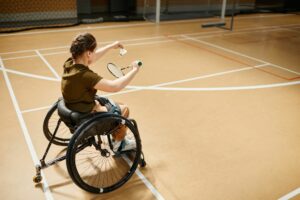 Provided symptoms don’t worsen, a graded increase in daily activity is recommended for Para athletes, but the grading may need to be customized. For example, many non-Para athletes start their graded return-to-play process on a stationary bike, but this wouldn’t be possible for an athlete in a wheelchair or someone with a marked discrepancies in leg length. An alternative, such as a handcycle, may be needed. Monitoring of balance and gait must also be adapted for wheelchair users or athletes with gait or balance issues. An additional consideration for athletes with spinal cord injuries at the sixth thoracic vertebrae or above is to monitor exertion level by measuring heart rate. These athletes may have dysfunction of their autonomic nervous system that limits their ability to alter heart rate with exercise.
Provided symptoms don’t worsen, a graded increase in daily activity is recommended for Para athletes, but the grading may need to be customized. For example, many non-Para athletes start their graded return-to-play process on a stationary bike, but this wouldn’t be possible for an athlete in a wheelchair or someone with a marked discrepancies in leg length. An alternative, such as a handcycle, may be needed. Monitoring of balance and gait must also be adapted for wheelchair users or athletes with gait or balance issues. An additional consideration for athletes with spinal cord injuries at the sixth thoracic vertebrae or above is to monitor exertion level by measuring heart rate. These athletes may have dysfunction of their autonomic nervous system that limits their ability to alter heart rate with exercise.
As with all concussed athletes, before return to sport happens, the first priority for recovery should be a return to school or work, when appropriate and without aggravating symptoms. For athletes with symptoms following a concussion, therapists may try cervical spine and vestibular rehabilitation, which are often helpful. But these therapies must be done with caution and be adapted for Para athletes with spinal cord injuries or neck dysfunction. A final consideration is that monitoring the return-to-sport process may be more complex for Para athletes, because of pre-existing symptoms and signs present in their baseline measures (that is, in the “non-concussed state”). Again, this reinforces it’s important to conduct a thorough pre-season assessment.
Preventing concussions in Para sport: The 3 E’s
Decades ago, renowned injury epidemiologist Susan Baker described the “3 E’s of Injury Prevention”: education, enforcement, and either engineering or environment (Baker, 1973). The E’s are endorsed by Parachute, a Canadian national charity dedicated to injury prevention, and all E’s apply to preventing concussions too. The key to implementing effective prevention strategies begins with a better understanding of the incidence and mechanism of injury. Additionally, more research in the Para sport domain is urgently needed.
The obvious gap in concussion education (the first E) isn’t only an issue for athletes, but for coaches, officials, sport organizations and healthcare providers. It’s imperative they all appreciate that concussion is a significant injury. Para athletes who already experienced severe illness or physical trauma (such as cancer or spinal cord injury) may not consider concussion as a concern. Many Para athletes are risk takers and effective education strategies must address these issues. Strategies must also be implemented at multiple levels, and address how critical it is to recognize concussion, stop play and medically assess the athlete.
Enforcement, the second E, refers to the sport’s rules. This might involve introducing new rules or changing existing rules to increase athlete safety. For example, the 2014 Sochi Winter Paralympic Games had a very high incidence of serious injury in Para Alpine events. Analysis of these injuries led to a close collaboration between sport technical officials, host officials and the IPC Medical Committee. That collaboration led to changes that greatly reduced the injury rate at the 2018 Winter Paralympic Games. The changes included more training runs and racing earlier in the day when snow conditions were better (Blauwet et al., 2019). As another example, Cerebral Palsy Football and Blind Football (soccer) have introduced temporary concussion substitution rules. When there’s a suspected concussion, a 10-minute window allows a substitute to play while the injured player is carefully assessed for concussion by medical staff. If the player is deemed to not be concussed, they can return to play, without the team losing a substitution (Ahmed et al., 2020).
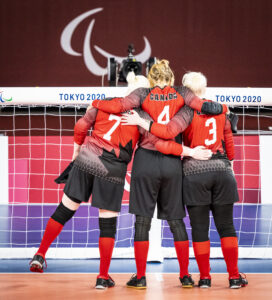
The third E can refer to changes to the environment or engineering. Environment might include slope alterations in Para alpine skiing (such as more “waves” and fewer “jumps” which are particularly dangerous for sit-skiers). Engineering involves preventative measures that focus on infrastructure and equipment. Protective equipment, such as helmets, haven’t been evaluated well in Para sport. However, the International Blind Sports Association (IBSA) has engaged in research to determine the effectiveness and feasibility of softshell helmets with integrated goggles or blindfolds for Blind Football players (Kissick & Webborn, 2018).
Not “the final frontier” but the “next frontier”
At an American College of Sport Medicine meeting in 2016, one of this paper’s co-authors (J. Kissick) was asked to speak on concussion in athletes with disabilities. He was given the title, “Concussion in the disabled athlete: The final frontier.” Thankfully, more is known now and there’s more to say on this topic than 5 years ago. But to keep athletes safe, there’s still much work to be done and a lot more that needs to be known. Concussion in Para athletes won’t be the “final frontier,” but it is and should be “the next frontier.” In keeping with the Star Trek analogy, Captain James T. Kirk perhaps said it best: “… there is no such thing as the unknown, only things temporarily hidden and not understood.”
One size doesn’t fit all for concussions. However, the CIPS Group and its position statement together are a step to emphasize and address this.